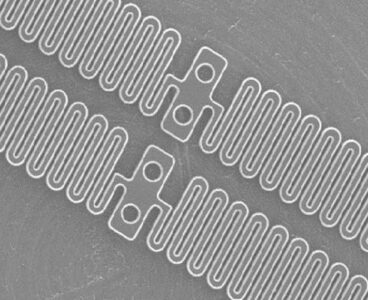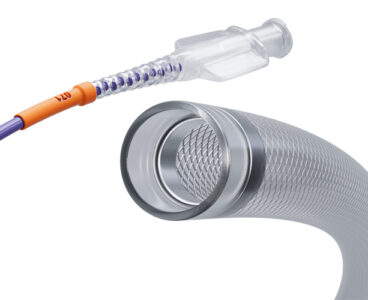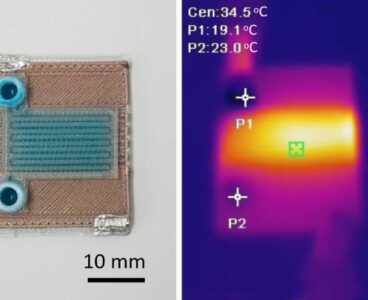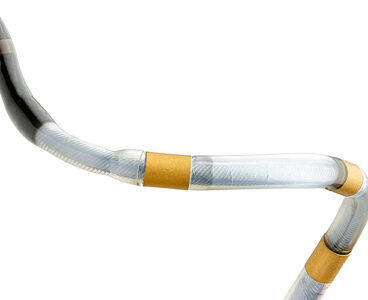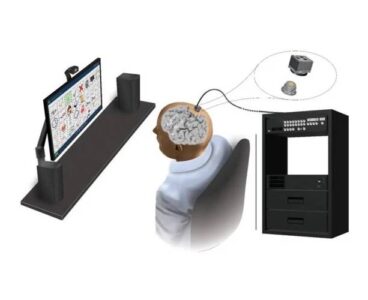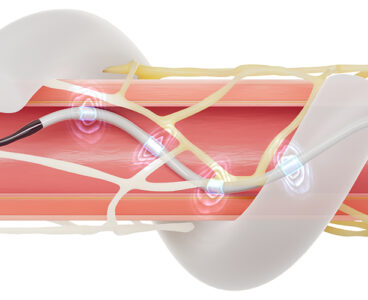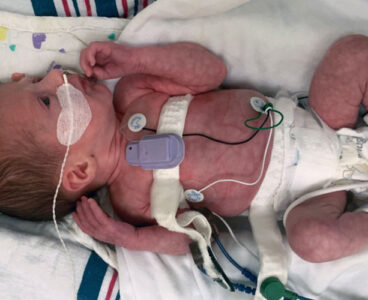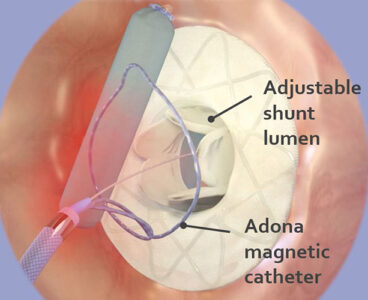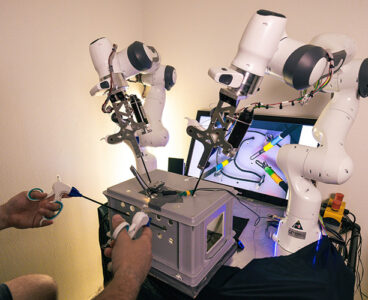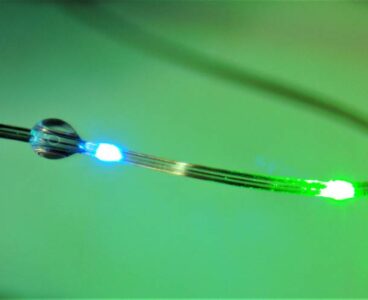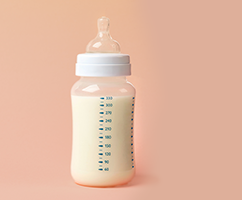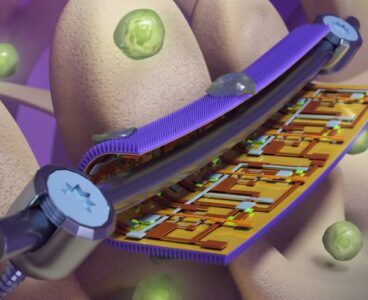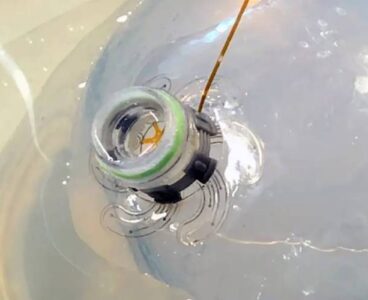Acquandas is a thin-film device manufacturer that’s now partially owned by brain-computer interface developer Synchron. Rodrigo Lima de Miranda founded Acquandas in 2012 based on microsystem technology he developed for his doctoral thesis, where he was trying to develop a shape memory material made with thin-film deposition. The Kiel, Germany-based contract manufacturer now uses the…
Cerenovus President Mark Dickinson on the future of stroke care
Cerenovus President Mark Dickinson forecasts the innovative technologies that will advance stroke care in the coming years. It’s getting harder to beat aspiration systems for fast and simple thrombectomies to remove blood clots that are blocking oxygen from a stroke patient’s brain. That’s according to Cerenovus Worldwide President Mark Dickinson, who discussed the future of…
MIT researchers use 3D printing to produce self-heating microfluidic devices
Researchers at MIT used 3D printing to create self-heating microfluidic devices, highlighting the potential for this technique in future applications. Microfluidics have uses in detecting diseases within tiny samples of blood or fluids, like in COVID-19 test kits. The team at MIT believes the technique could someday help rapidly create cheap but accurate disease detection…
Medtronic execs: renal denervation for AFib could be on the horizon
Medtronic renal denervation leaders Jason Weidman and Sean Salmon discuss RDN’s potential to help patients with atrial fibrillation (AFib). As if treating an epidemic-level condition like hypertension wasn’t enough, renal denervation (RDN) also shows potential for atrial fibrillation (AFib) and other conditions related to high blood pressure. In interviews with Medical Design & Outsourcing, Medtronic…
Brain-computer interface gives patient with ALS control of home devices
Researchers say they observed the successful translation of brain signals into computer commands with a brain-computer interface (BCI) implant. A team at Johns Hopkins surgically implanted the BCI on the brain of an ALS (amyotrophic lateral sclerosis) patient. They published their results, which showed the accurate translation of computer commands from brain activity, in Advanced Science.…
Researchers develop therapy for implant metal poisoning
Researchers say they found a way to protect people from heavy metal poisoning as a result of toxicity from cobalt implants. Cobalt was widely used for hip and knee joint replacements due to strength and durability, but this led to cases of heavy metal poisoning. Toxicity can arise from cobalt and other metals if they…
What Medtronic learned on its long road to RDN approval
It took Medtronic nearly 13 years to win FDA approval for renal denervation (RDN) since buying Ardian and its hypertension-treating technology. Jason Weidman, the Medtronic SVP who is also president of coronary and RDN, has a more personal measure of the long road to approval for the world’s largest medical device manufacturer. “The first meeting…
Researchers develop first wearable for continuous monitoring of body sounds
Northwestern University researchers have developed wearable devices for continuously monitoring the sounds made by a patient’s body, such as breathing, heartbeats and digestion. The soft devices stick to a patient’s skin and use two high-performance, digital microphones to listen to sounds inside and outside the body. One of the microphones faces inside the patient, while…
Donaldson opens new life sciences technical center
NEWS RELEASE: Donaldson Company Invests in New Life Sciences Technical Center Research Triangle Park, a North Carolina technology and biotech hub, is Donaldson’s choice for the latest expansion of its life sciences footprint MINNEAPOLIS — Donaldson Company, Inc. (NYSE: DCI), a leading worldwide provider of innovative filtration products and solutions, announced its commitment to broadening…
Shunt device startup wants to break barriers in nitinol and heart sensing
Medical devices have yet to tap nitinol’s shape memory properties, but that’s just one breakthrough Adona Medical hopes to achieve with its adjustable, bi-atrial-sensing heart shunt. Adona Medical co-founder and CEO Brian Fahey’s presentation on his shunt device startup’s aspirations elicited palpable interest from the cardiologists in the room at CSI Frankfurt. “You plan to…
3D-printed COVID-19 breath test takes two breaths and one minute
A 3D-printed COVID-19 breath test delivers results within 60 seconds from just one or two breaths, according to Washington University in St. Louis researchers. It’s the same team that recently developed an air monitor that can detect the COVID-19-causing SARS-CoV-2 virus in the air within minutes. Researchers from the McKelvey School of Engineering and the…
Robotic hand uses low-cost touch sensors instead of vision
Engineers at the University of California San Diego developed a new approach allowing a robotic hand to rotate objects solely through touch. The UCSD method enables a robotic hand to do so without relying on vision. Using their technique, the engineers built a hand that can smoothly rotate a range of objects, including small toys…
Radiated, ‘humanized’ mice offer insights into implant rejection
Researchers at Johns Hopkins say they discovered an advanced “humanized” mouse model that helps predict the immune system’s reaction to medical implants. The team set out to evaluate why human bodies frequently reject implanted biomaterials, Few ways currently exist to predict this or to prevent it from happening, the researchers said. Joshua Doloff led the…
Why hearing aids might slow cognitive decline in older adults
Results from a clinical trial indicated that hearing aids may play a part in reducing long-term cognitive decline for older adults. According to the University of South Florida, it was the largest randomized, controlled clinical trial testing the efficacy of hearing aids for reducing long-term cognitive decline in older adults. ACHIEVE evaluated patients between ages…
Four-armed surgical robotics system taps a surgeon’s feet for controls
By Brianna Wessling at The Robot Report Researchers at EPFL, a public research university in Lausanne, Switzerland, have developed a four-armed surgical robotics system that allows surgeons to perform laparoscopic surgeries by controlling two of the robotic arms using haptic foot interfaces. The results were published in The International Journal of Robotics Research. The research was…
Researchers say this polymer can mimic human muscle in medical devices and robotics
Researchers at Pennsylvania State University said they developed a new ferroelectric polymer that could convert electrical energy into mechanical strain. Such a polymer could offer potential for applications in medical devices, advanced robotics and precision positioning systems. The team says that mechanical strain represents an important property for an actuator. Traditionally, these actuator materials were…
MIT engineers say they can control signals from the brain to the gut
Engineers at MIT say they developed a new technology that can control neural circuits connecting the gut and the brain. Using fibers embedded with sensors, plus light sources for optogenetic stimulation, the researchers demonstrated this control in mice. The study showed that they could induce feelings of fullness or reward-seeking behavior by manipulating cells of…
These magnetically controlled video capsules could provide an endoscopy alternative
Researchers at George Washington University recently tested a method for remotely driving a miniature video capsule into problem areas of the stomach. Medical technology company AnX Robotica created the capsule endoscopy system used in the study, called NaviCam. The company also funded the research. Physicians can direct the capsule to potential problem areas to visualize…
80-cent device prototype uses smartphone to monitor blood pressure
University of California San Diego engineers have prototyped an inexpensive device that clips onto a smartphone to monitor a user’s blood pressure. The 3D-printed device uses the smartphone’s camera and flash paired with an algorithm on an app to take systolic and diastolic blood pressure readings. “We’ve created an inexpensive solution to lower the barrier…
BBy creates first condensed-to-powder breast milk, announces seed funding
BBy, a healthtech company revolutionizing hospitals’ breast milk storage and administration process, introduces its food device that condenses breast milk to a powder, maintaining the crucial bioactive components that make breast milk the best infant nutrition. BBy is disrupting a 70-year-old process in which hospitals have stored and administered donor breast milk in freezers, wasting…
3D-printed wearable sweat sensor could advance home monitoring
Researchers at the University of Hawaiʻi at Mānoa College of Engineering say they developed a 3D-printed, wearable sweat sensor. Called the “sweatainer,” the device harnesses the power of additive manufacturing to enable a new type of wearable sweat sensor. The researchers say the small, wearable device — similar in size to a child’s sticker —…
These smart implant coatings watch for implant failure while killing bacteria
Researchers at the University of Illinois developed “smart” coatings for orthopedic implants that can monitor strain on the devices. These coatings monitor strain to provide early warnings of implant failures while killing infection-causing bacteria. They integrate flexible sensors with a nanostructured antibacterial surface. Researchers say they received inspiration for the surface from the wings of…
Sensor-filled soft robot implant tested for brain monitoring
Researchers say a soft robot inserted through a tiny hole in the skull could offer effective brain monitoring and treatment. The researchers aim to provide a less invasive approach for placing electrodes on the brain’s surface compared to traditional methods. In those traditional methods, surgeons cut a hole in the skull the size of the…
Glowing nanoparticles enhance at-home COVID-19 test sensitivity
Researchers at the University of Houston are using glow-in-the-dark materials to enhance the sensitivity of rapid COVID-19 home diagnostics. The widely used lateral flow assay provides rapid results for diagnostics such as at-home COVID-19 or pregnancy tests. They also offer low costs and ease of operation. Test results on LFA diagnostics come through in colored…
This surgical robotic arm could potentially 3D bioprint inside the human body
Engineers in Australia say they developed a miniature robotic arm that could 3D print biomaterial directly onto human organs. UNSW Sydney researchers developed the flexible, soft robotic arm for 3D bioprinting. This process fabricates biomedical parts from so-called “bioink” to construct natural, tissue-like structures. Predominantly used for research purposes, the process normally requires the use…

